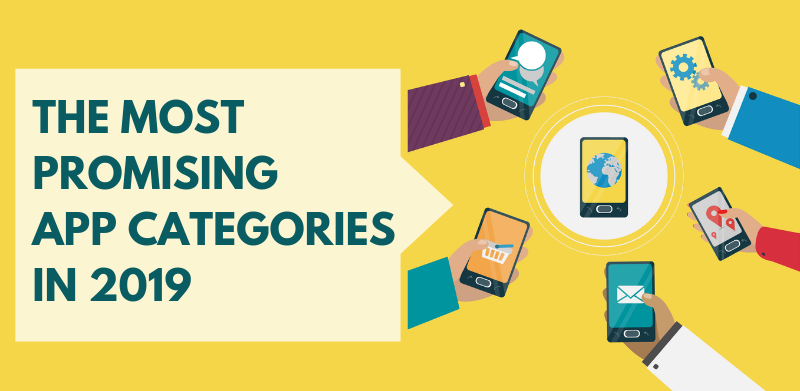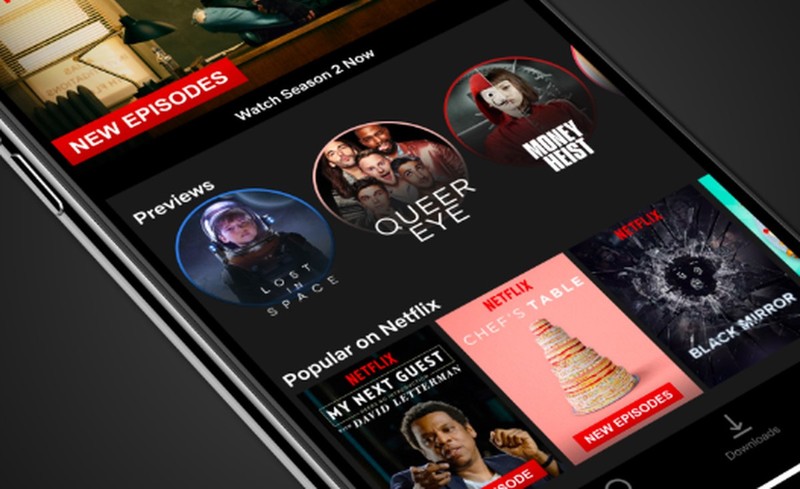Smartphones have become an essential part of everyday life for more than 3 billion people. Such massive market means an enormous demand for tools and applications to use. Software developers apparently are determined to saturate it – right now there are more than 4 million different applications across the platforms, with thousands more produced every day!

The size of the application market makes it difficult to determine which type of app will be more successful. To understand it better, we need to look at the performance of different app categories, which is not that easy either. Android’s Play Market divides the apps into 34 categories, while iOS App Store uses 22 categories. Despite the difference in distribution and in the overall number of apps, the top categories look similar for both platforms:
- Games;
- Education;
- Business;
- Lifestyle;
- Entertainment;
- Utilities;
- Health;
- Books.
Let’s take a closer look at these categories and find out what makes them so popular and promising.
Top 8 Mobile App Categories
1. Games
Gaming apps are ahead of every other category with an impressive margin. They account for more than a quarter of all applications both in the Apple App Store and in Google Play Store. The mobile gaming industry has attracted more than 2.8 billion users around the world, and this number keeps growing!
Although only a very small portion of this audience spends money on in-game purchases (around 5%), the revenue the developers get is extraordinarily high. It accounts for around half of the gain of the overall gaming industry, clocking at $70 billion in 2018. As the fastest growing gaming platform, mobile apps attract bigger gaming studios and indie developers.

Mobile games are divided into subcategories, each of them having popular and notable examples. Some of the most downloaded applications from the gaming category include Candy Crush Saga (puzzle, 293 million monthly users), PlayerUnknown’s Battlegrounds (shooter, 30 million active players daily), Clash Royal (strategy, 50 million daily users at its peak), and Pokémon GO (AR game, 1 billion user player base).
2. Education
Young people have an enormous impact when it comes to technological advancements. They are more open to change, full of revolutionary ideas, and determined to save the world. That’s why youngsters are the main target audience when it comes to innovations.
According to research, an average smartphone user in the US is a teenager. So, it makes total sense that the second most popular app category is educational software. Furthermore, apps from this category have huge potential for innovation and improvement of the ways we consume and learn new information.
Although most apps from this category can be used to learn new facts or acquire new skills, each of them operates in a different way. It is hard to find any similarities between a language learning app (like Duolingo, with around 300 million users), various course providing platforms (for example, Canvas Student with 40,000 unique monthly users), and an image-analyzing calculator (Math Calculator app). However, all of them deserve their place in this category and on users’ devices.
Read also: Educational Apps in 2019: How to Make a Profitable eLearning App
3. Business
Business applications hold a very close third place behind the educational software in terms of app quantity (less than 1% difference). The popularity of this category is easy to explain as well. Smartphone users value independence, control, and organization. Business apps can provide all that, and even more.

Overall, the first business software was aimed to help entrepreneurs with project management and was developed back in the 1980s. Since then, business software solutions, including smartphone apps, have changed a lot and now also aid in:
- Automating processes;
- Establishing a connection;
- Editing documents;
- Accessing data (for example, through cloud storage);
- Doing financial calculations and optimization.
For years, Microsoft Office components have assisted business owners and employees. Since the release of the smartphone version, it has stayed on top of all charts as the most popular business app in the world. It is a true testament to the trust the company has built with the users and the quality support it provides to them. Some of the new business solutions, however, are on par with the veterans. Salesforce CRM systems are popular as well, with more than 3 million active users.
4. Lifestyle
Going through life, each person lives through different experiences. That’s why the lifestyle app category is so wide and contains hugely different tools. Variety is a spice of life, and this software group is definitely among the most seasoned. You won’t find an app that will completely change your life, but there are multiple solutions that can help you to boost different aspects of it.
Exploring this category, you will notice that some apps could be divided into smaller groups. For example, some of them are:
- Dating apps (Tinder, Bumble, Badoo);
- Accommodation search tools (Realtor.com, Zillow);
- Financial management (Venmo);
- Travel guides and recommendations (Citymapper);
- Internet security (NordVPN).
Tinder is both the most popular dating app and the most downloaded lifestyle app right now. Although it is not that unique or revolutionary, it has made online dating simple and popular. It has helped a lot of people and will help a lot more, providing over 20 billion matches every day.
Another fairly popular lifestyle application is Venmo. Although it is fairly new, it has accumulated 10 million monthly users. Its impact on a person might not be as life-changing, but it definitely improves the money exchange experience.
Read also: Travel Apps: Development and User Experience
5. Entertainment
While job and self-improvement are important parts of our life, there should be a time and a place for simpler joys. Unlike the previous app categories, entertainment applications are mostly focused on similar tasks: gaining access to different forms of multimedia and their playback.
Streaming services have gained a lot of popularity in recent years. Widespread availability, fair prices, and a healthy competitive atmosphere have led the industry to its golden age. The development of dedicated mobile apps has certainly helped Netflix, Hulu, and HBO to get away from traditional television and grow into the juggernauts they are now.

The most popular video streaming app though, both in terms of the number of users and the amount of content consumed, is YouTube. In a single year, users have spent over 9 billion hours using the service. It says a lot not only about the quality of the content provided but also about the social media aspect of the app.
Social media has become an intrinsic part of our lives. Numerous software developers are successfully taking advantage of it by integrating social media elements into their apps. Entertainment applications work extremely well with social media functions. Other notable examples of this successful amalgamation are Instagram, Snapchat and TikTok.
6. Tools and Utilities
Every mobile phone, whether it is based on Android or iOS, comes with a set of pre-installed applications. Unfortunately, in most cases, they are not enough for adequate functioning, and can sometimes even impair your experience. Here is where the Tools and Utilities category might help you.
Utility software is made to help you unlock the full potential of your device and to customize it just for you (especially important for Android users). Unfortunately, it requires some time, attention and experience to find the right tools to achieve your goals. That’s why this category is not as popular and extensive as others (only around 3% of all apps).
The most popular additional tool iPhone users install is Bitmoji: an app that allows you to customize your avatar, emoji, and stickers you send. Other popular utility apps are connected to cell providers, like AT&T, T-Mobile, and Verizon.
Android users, on the other hand, have a much better choice when it comes to utility apps. They often install an additional file manager (Total Commander, Solid Explorer), privacy-enhancing applications (AppLock), and even a device location ping app (Find My Device).
7. Health and Fitness
Health and fitness applications belong to another category that is aimed to influence our lifestyle. Unlike the lifestyle apps, though, all fitness apps target a single aspect of your life. Of course, they may differ in their approach and style, but the focus remains the same: to help you to stay healthy.

Health is one of the most important things we have. Unfortunately, we don’t have full control over it, but it is up to us to do our best to keep the body and mind in shape. So, most health apps provide all the tools necessary to be the best yourself you can.
Although the apps have a single goal, they can still be divided into subcategories. The specific steps some apps focus on are:
- Healthy diet (Fooducate);
- Workout regime (TickTick);
- Exercise advice (HomeWorkout, Stronglifts).
Despite the fact that these tools are incredibly helpful, they won’t provide any effect if the user isn’t willing to work long and hard.
8. Books
Although this category is at the bottom of our list with less than 3% of apps in it, it is great that people are still interested in reading books. Furthermore, digital books have a number of advantages over their physical counterparts, like:
- It is with you wherever you are;
- You can customize the text formatting;
- It is easier to manage multiple e-books;
- You are saving the forests;
- If you use audiobooks you can even read with your eyes closed!
Since the early days of digital releases, Amazon has been a leading company in the field. Amazon Kindle still remains one of the best ways to buy and enjoy any e-book you want. If you have the Amazon Echo, your trusty companion Alexa can even read your book to you.
If you prefer high-quality audiobooks, you’ve probably heard about Audible. The offer the service provides is certainly tempting: a free audiobook from hundreds of thousands of names in the library, with a fair subscription fee after the first month.
If you prefer comic books and graphic novels, there is something for you in the store as well. ComiXology is an awesome and intuitive way to check out comic book classics and follow all the latest releases.
All in all, although this category is rather small, there is something that will suit everyone’s taste.
Conclusion
People use their smartphones for different reasons. Some load them with useful applications and apply them as a necessary tool for their everyday life. Others simply use them for entertainment. Neither approach is necessarily wrong, you just need to know which category your target audience falls into.
If you have an idea for a popular app, but you’re not sure whether you can handle the development process, don’t give up. We’re ready to help you bring your concept to fruition. If you’re ready to learn more, reach out to us and we will get back to you as soon as possible!







